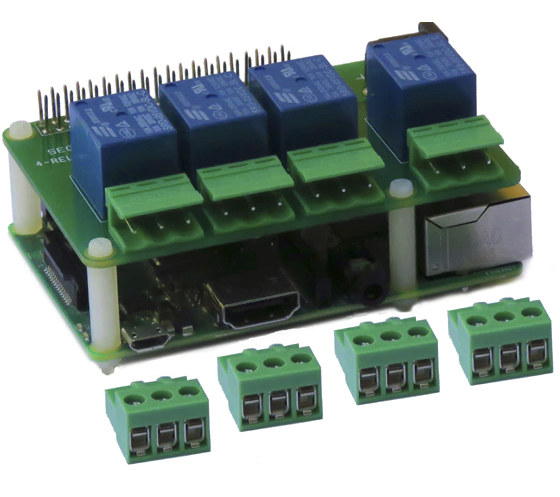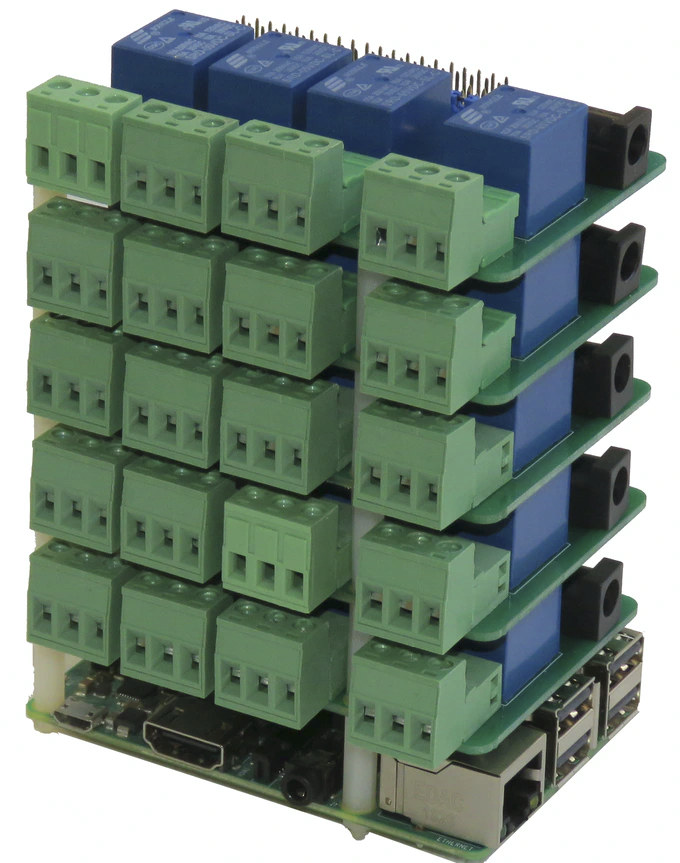People have been playing with off-the-shelf relays on Raspberry Pi boards ever since it was released in 2012, and over the years, some companies have maybe Raspberry Pi-specific relay boards such as Strawberry4Pi and Pi-OT.
Two years ago, Sequent Microsystems introduced a stackable 8-Relay board enabling up to 64 relays to be connected to a single Raspberry Pi board. The 8-relay board only supported 24V/2.5A, and the company is now back on Kickstarter with a 4-relay board with 250V/10A line-switching relays that can offer up to 32 relays by stacking 8 boards connected to one Raspberry Pi board via the 40-pin I/O header.
The board comes with four Songle 250V/10A relays, 3-pin pluggable connectors that accept 18 to 22 AWG wires, and a 5V/3A power supply is recommended. If you stack multiple relay board a beefier power supply may be required. Here are some power consumption numbers provided by the developer:
- All relays OFF: 10 mA @ +5V
- All 4 relays ON: 72 mA each, 298mA in total @ +5V
Communication with the relay board(s) occurs over I2C so you can still use all I/Os from the Raspberry Pi since the 40-pin header is still exposed on the top board. If you stack multiple cards, you’ll need to set jumpers on a 6-pin header to have a different I2C address for each board.

The project has surpassed its lowly $1,000 funding target, and the 4-relay board is offered for $20, and bundles are offered up to an eight board bundle for $120 ($15 per board). Shipping adds $5 to $10 depending on the selected reward, and backers should expect their perk(s) to ship in July 2020.
Via LinuxGizmos

Jean-Luc started CNX Software in 2010 as a part-time endeavor, before quitting his job as a software engineering manager, and starting to write daily news, and reviews full time later in 2011.
Support CNX Software! Donate via cryptocurrencies, become a Patron on Patreon, or purchase goods on Amazon or Aliexpress





